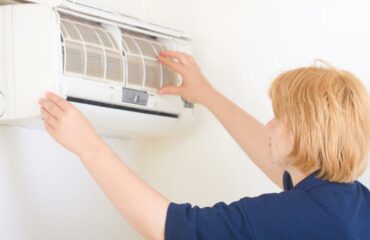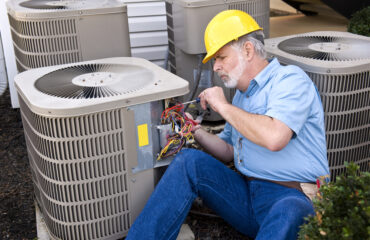
When storm strikes and the power lines go down, your HVAC system can carry long-tern damages if not identified or prevented right away. Heavy rainstorms can potentially flood your HVAC unit’s outdoor components, as well as disrupt electrical connections.
In order to take the necessary steps to safeguard your home’s HVAC system, you should understand how storms can damage your heating and cooling system so that you can dodge any unnecessary HVAC repairs. If any part of the system has been damaged during a flood or storm, do not attempt to fix it yourself. Rather, call an expert to assist you in assessing the damage, as well as repair them quickly and safely.
In the meantime, take these preventive measures as a precaution pre-storm.
Install a Sump Pump and Maintain It
An HVAC system that is located in the basement is more prone to flood damage during heavy rains. Consider having a sump pump installed in your basement, if you haven’t already, to prevent floodwaters from damaging your HVAC system. A sump pump works by automatically pumping the water away from the basement before it can even accumulate.
Once the sump pump is installed, check it regularly as well as its power supply to make sure that it will work properly, especially in emergency situations.
Protect the Unit with a Canvas Cover
When heavy rains pour and strong winds blow, debris may get carried and blown toward your HVAC unit, damaging it. Before a storm hits the area, protect your HVAC system by using hail guards or a heavy canvas to cover it. Keep in mind that you will not be able to use the HVAC system while the cover is one. If you are to power up the system again, be sure to take the protective cover off.
Remove Any Loose Objects in Your Yard
The debris that could damage your HVAC system during a storm may come right from your yard. So you better keep the yard clear and well maintained to protect your heating and cooling systems. Promptly remove twigs, and bring lawnmowers and other equipment indoors.
Put Your HVAC Equipment in an Elevated Platform
If you are living in a low area, you can prevent potential flood damage by installing your HVAC equipment on a higher level or raising it off the floor.
Sometimes, small external damages to your HVAC unit can grow into bigger, internal problems. To avoid such issues, it is important to shield both the inner and outer parts of your system from storm and flood damage. Specifically, check your unit’s air filters, duct shields, condensing unit, refrigerant line, heat-pump components, and the fan motor and blades after a storm.
An HVAC system was not built to weather storms, but with proper preparation, it is more likely to withstand one. To ensure that your system has not undergone any grave damage, inspect it once the storm has passed.
Learn more about HVAC repair and maintenance by visiting Arizona Accurate on the web and calling our line!



